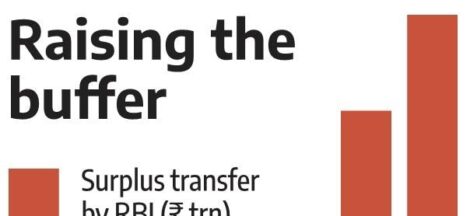NEW DELHI: Economists have raised their retail inflation forecasts for the July-September quarter of FY25 by 40-50 basis points (bps), as they expect prices of key food items, mainly vegetables, to stay elevated in the near-term, along with rising core inflationary pressures.
An uptick to the Q2FY25 forecasts also poses a threat to the full year’s CPI inflation projection of 4.5% – made by the Reserve Bank of India (RBI).
However, as of now, most economists, who FE spoke to, feel CPI inflation will meet the RBI’s full year estimate, as they believe that Q3FY25 would see a sharp correction in food prices, which would offset the impact of higher prints seen in the second quarter.
The RBI has projected CPI inflation to average 3.8% in Q2; 4.6% in Q3; and 4.5% in Q4. In Q1, retail inflation averaged 4.9%, as projected by the RBI.
“July and August will see higher inflation prints in Q2, but from September fresh supply of vegetables will come into the market, and prices will correct, from Q3” said Upasna Bhardwaj, chief economist, Kotak Mahindra Bank. Bhardwaj sees a 40 bps uptick to Q2 inflation forecast, but 10 bps fall in that of Q3.
On the core inflation front, economists say the telecom-tariff hikes, applicable from July, along with a rise in manufactured goods inflation will lead to price pressures intensifying on non-food, non-fuel components within the CPI (accounting for about 47% of the index).
“Core inflation will start moving higher from July, and will eventually reach 4% by December,” said Anubhuti Sahay, head – India economic research, Standard Chartered.
Moreover, manufactured goods inflation (within the WPI) in June came in at a 16-month high of 1.43% in June, which poses “some risk” of pass through to core CPI inflation, noted Suman Chowdhury, chief economist, Acuité Ratings & Research.
Chowdhury for now has retained the full year’s forecast at 4.5%, but says that there is a possibility of CPI inflation surprising on the upside in the Q2FY25, around 5%, leading to an upside of 50 bps also for the whole year.
The RBI in the June monetary policy statement had said that going forward, overlapping shocks engendered by rising incidence of adverse climate events impart considerable uncertainty to the food inflation trajectory. “Normal monsoon, however, could lead to softening of food inflation pressures over the course of the year,” it had said.
In June, food inflation stood at a six-month high of 9.36%. Sequentially, the Consumer Food Price Index (forming 40% of the CPI) rose 3.2%, at the highest pace in 11 months. This was mainly driven by a sharp rise in prices of key vegetables, such as onion and tomato.
Both the vegetables during June recorded an inflation rate of 58.49% and 57.59%, respectively; and their prices are likely to remain high at least till August, say analysts.
The wholesale mandi prices of onion at Lasalgaon, Nashik – the hub of the country’s onion trade is currently ruling in the range of Rs 2500–3000/ quintal against Rs 1500-2000/quintal that prevailed three months back.
“The prices will continue to be at the current level till the kharif crops start arriving in the market by September,” Jaydutt Holkar, director, agricultural produce market committee (APMC), Lasalgaon, Nashik, told FE.
Potato prices are also likely to be elevated till the middle of November when the new crop starts arriving from Punjab, Madhya Pradesh, Uttar Pradesh and Maharashtra, said Shyam Bhadur Chauhan, owner of JR cold storage in Agra, the hub of the country’s potato wholesale trade.
The modal retail prices of potato across the country, according to department of consumer affairs data on Tuesday, was Rs 40/a kg, an increase of 60% compared to prices that prevailed three months back. Similarly onion prices have increased to Rs 40/kg from Rs 30/kg, an increase of 33% during the same period.
Source: The Financial Express




 Defence Ministry Notifies Fifth Indigenisation List Of 346 Items For DPSUs
Defence Ministry Notifies Fifth Indigenisation List Of 346 Items For DPSUs 